
The Award Winning
Monthly Newsletter of the Anchorage Coin Club
Volume 14, Number 6 June, 2001
June Membership Meeting:
Wednesday June 6th, 2001 Central Lutheran Church 7:00 PM Open, 7:30 PM Meeting

FROM YOUR EDITORS
Our Young Numismatist program now has money for a little longer. The program is financed through donation auctions. Thanks go out to our generous members who gave numismatic material to the auction as well as the members who were at the auction to buy coins. A total of 96 lots were sold at the May YN Coin Donation Auction. The auction’s gems included a silver US 2000 proof set, a 2000 1/10th oz gold eagle, and a silver token from the University of Alaska.
Before we got started on the auction we gave Mike Gentry a 1972 proof set as a door prize. Then we gave Jim Hill an uncirculated 1922 Peace Dollar as a membership prize.
It was announced that it is time to start planning for the summer picnic. After some discussion it was decided to move the picnic to August 11th to accommodate some of the key members who will be busy this summer. The picnic will be at Centennial Park (the same place it was last year).
Carl of Carl’s Jewelers brought a slabbed 1889 Morgan Dollar to the
meeting and challenged the members to guess the grade. Carl had taped
over the PCGS grade and said the one who graded it right would win the
coin. Several of our, well educated, members graded the dollar the
same as PCGS. The winner was chosen in a drawing from those who got
it right. One of our YNs, Branden Samarajski, won the coin.
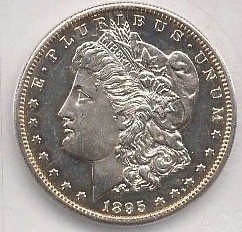 |
At the forefront of many of the member’s minds was the big coin expo scheduled for the summer of 2002. To have the time to cover all the bases and put on a successful and repeatable event we decided to push the expo back to 2003. Some of the first steps toward this colossal event are: find ways for the club to make money now, increase the club’s membership, and plug the leaks that are draining the club’s bank account. We will be entertaining ideas to deal with these at the next board meeting.
Once we were done talking we got down to auctioning off the numismatic material donated by our members. Bill Hamilton was the auctioneer and Robert Hall was the accountant. Bill got through all 96 lots that night and we raised a grand total of $655.25 purely from our membership for a very good cause. Our YN program helps kids become educated in what would seem like a foreign language to the non-numismatist. A language they will know for the rest of their lives. Thank you everyone!….Your Editors.
MEMBERSHIP NEWS
Schedule of Events for the Month of June
The meeting was called to order by President Bill Hamilton at 7 PM.
The main topic discussed at this Board meeting was a progress report from each of the committees on the Coin Show planned for the Summer, 2002 or 2003.
Robert Hall reported that the letter sent by Anchorage Coin Club Secretary Larry Nakata was received by PNNA (Pacific Northwest Numismatic Association) earlier this month. Note: PNNA is the regional numismatic organization consisting of coin clubs from the Pacific Northwest area. The Anchorage Coin Club is a member of this numismatic organization. The Anchorage Coin Club’s board and committees involved in planning our Summer coin expo wanted to determine what resources can be provided by PNNA in helping us with this expo.
Discussions with PNNA indicate their organization can offer a lot of expertise in helping our club plan this event. The PNNA Board has requested that we first determine the degree and size of the show desired. The size could range from a coin show to a convention (in which exhibits, organizational meetings, auctions, and educational programs would be hosted as part of the convention events).
It was determined, at this Board meeting, that we will look at a convention
type coin expo to be held in Summer of 2003. Discussions among the various
committee and board members indicated the logistics involved in putting
together a business plan is one issue. Implementing that plan is another
issue that may take some time. The logistics involved in implementation,
financial cost issues, and timelines needing to be met resulted in the
decision that it would be more prudent to schedule this coin expo for the
Summer of 2003.
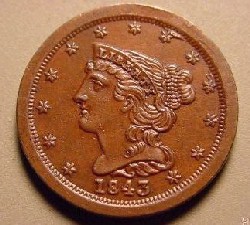 |
With this determination made, the committees and board then looked at various options. Discussed were:
Carl then gave the committees and board a briefing on his committee’s plan for determining dealer interest in attendance of such a convention. Carl will be putting together a flyer for distribution to coin dealers at major coin shows (such as the ANA Convention in August). It is Carl’s intent to have these flyers configured in such a way that a dealer interested in attending this event would fill out the form…and mail it in to our club’s PO box using a self addressed envelope. Besides having a way of knowing who is interested, this should help Carl develop a correspondence database to keep these dealers informed as we move forward with our plans for the Summer 2003 coin expo. It is Carl’s view that we should have a pretty good idea of dealer interest level within a month or so following the ANA Convention in Atlanta.
Meantime, arrangements have been made in which a meeting will be held at the ANA Convention in Atlanta in August….between PNNA and Anchorage Coin Club committee members who will be attending the ANA Convention event. Robert Hall and Roy Brown intend to go to the ANA Convention and will represent our club in working with PNNA on support that they can provide for this event. Other members of our club who will attend the ANA Convention are welcomed to participate in the meeting.
At this time, meeting a timeline of 3rd quarter of this year for the business plan appears to be feasible. So…the committees are moving forward with this timeline in mind.
As there was no further business to discuss, the meeting was adjourned at 8:35 PM.
Each year, the YNs (i.e., Young Numismatists) in our Anchorage Coin Club are given an opportunity to visit The Alaska Mint, located in downtown Anchorage.
Thanks go to Mike Robuck, owner of The Alaska Mint (and life member of our coin club), for giving our YNs and their parents an opportunity to see how coins are designed and minted at his place of business.
We all met at The Alaska Mint on Saturday morning (May 12th). Mike was very gracious in providing snacks, soda pop, and lattes to all of us who attended the session. Yes….Mike does have a espresso/latte/coffee bar as his place of business. It’s some of the innovations that he and his wife, Michelle, have made at The Alaska Mint.
It was a good two hour session in which we were given a “cook’s tour” of his mint, how his coins are designed, how dies are cut, the type of planchets used for minting coins, and how the minting presses are used to make his company’s proof-like coins. Mike even went into great detail explaining the differences between how the U.S. Mint makes their coins vs. The Alaska Mint. It turns out their processes are very similar with the exception being the U.S. Mint makes a whole lot more coins than The Alaska Mint. We even had an opportunity for Mike Robuck to show us the minting presses in action. It was neat seeing a one oz. Silver round planchet being made into a proof-like coin. We even had an opportunity to see all of the different products The Alaska Mint manufactures….such as coin watches and other items that are made from his company’s coins.
Lots of questions were asked by YNs and parents alike about how coins are made. We got to see some of the errors that were accidentally produced by The Alaska Mint’s minting presses. Error and variety collectors would have been in envy of the various types of errors seen that day.
A fine time was had by all. Thanks again go to Mike and Michelle Robuck for allowing our YNs, their parents, and club members an opportunity to visit their place of business every year. It’s always an educational experience for all of our YNs….especially for the new YNs who join our club each year.
Our next YN meeting will be at the Central Lutheran Church on Friday, June 8th at 7 PM. This YN session will be on the subject of “How Coins are Minted”. Expect a VHS tape to be shown on this subject. It is intended to help our YNs better understand the minting process of coins in high volume mints…to help reinforce what was learned at month’s visit to The Alaska Mint.
Following the June 8th meeting, we will have a break in YN meetings for the months of July and August…..so that our YNs can enjoy the Alaskan summertime. We will resume YN meetings again on Friday, September 14th.
So…we have one more YN meeting to go before summer starts. Hope to see
a bunch of YNs and their parents at the June 8th YN meeting…….Larry
Nakata.
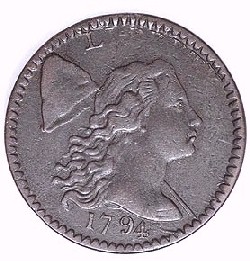 |
EDITORS NOTE: Our president, Bill Hamilton, recently came across this interesting article which comes from a company called Treasure Album. It’s a very good article:
There was a time when the average U.S. citizen could reach into his pocket and get a silver coin. He could open his wallet and find a bill redeemable in silver or if he was fortunate enough to be wa-a-y out west, he could change a five dollar bill and expect some silver dollars in change.
June of 1968 will always be remembered as the official time when Uncle Sam decreed that his silver certificates were no longer redeemable for silver. The tiny drops of silver granules which a citizen could get only by traveling to the San Francisco or New York Assay Office were his redemption fulfillment. No mail transactions were allowed so the number of redeemed certificates were minimal until the dealer in silver got into the story. By offering a bonus ranging up to fifty percent for a certificate, the dealers were able to redeem many millions of the bills. In turn they got bars of silver and then resold them for a minimal profit in a fluctuating market.
Silver was sold by the Treasury at an official rate of $1.29999 per ounce. As the stockpile lessened, the restrictions against unlimited purchases were placed into effect and only legitimate holders of a necessary “use certificate” were allowed to buy at the very low price. The outside market price ran as high as 75 per cent above the government supported figure. The bars were sold as fast as they were offered and prices and offerings for silver certificates varied from day to day during the last few months of the silver certificate redemption period.
The silver dollar was also in the public’s eye from a hectic day in 1964 when demand forced the Treasury to limit the coins at the cash window, where they had been available for face value. Coin collectors and the general public soon realized that the coins were no longer to be had in exchange for paper dollars and the demand began to escalate. Even the Las Vegas gambling Casinos were forced to eliminate the use of standard silver coin and substitute a metal token to prevent their supply from disappearing. The silver dollars are now seen only in collections or in exhibits.
The silver dollars from 1878 through 1921 were made by an engraver named
George Morgan and bear the image of a Philadelphia school teacher named
Anna Williams as his model and representation of Liberty. In this group
of coins there are two key dollars, the 1895 and the 1893-S. Both are worth
more than $5000 when found in unused condition. (The 1895 is a limited
issue proof coin). Editor’s Note: These two key dates together are worth
$55,000 today according to PCGS pricing.
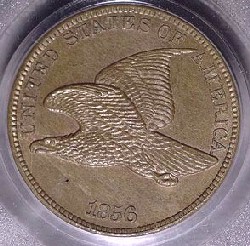 |
Silver dollars dated from 1921 through 1935 (some years missing as no coins were made on several occasions), are known as Peace Dollars as they were originally made to commemorate the end of the first World War. The coin is the only U.S. coin to specifically honor Peace. The image on the coin is the sculptor’s wife and she represents Liberty in the truest sense as she was a recently arrived Sicilian immigrant. Anthony de Francisci’s bride was Maria Therese Cafarelli.
But no matter the history of the silver dollar, its aide in circulation- the certificate or the granules- the story of silver is vital to every American because it represents a change in viewpoint by official Washington. The currency of the U.S., no longer tied to gold since 1933, is now almost gone from any ties to silver. The student of economics of tomorrow will know the truth of the policy change. Was it best or was it an inflationary act? He will always look at this package and its contents and relish the thought that this generation and silver were synonymous.
“COINDUST REVERIE”by John Larson (Member# 18)
During spring school break this year, my family and I took a trip to Seattle. We had a great time there, visiting the Seattle Center with its Space Needle, Monorail, and Science Center (They have a very compelling exhibit on the Titanic there now, with genuine artifacts recovered from the “debris field”, an area of the sea bottom between the two separated sections of the sunken vessel), and of course, the Pike Street Market. As a side trip, we also spent a day visiting Victoria, British Columbia, a truly charming city with gardens, museums, architecture, history, and shopping galore. I wish we could have stayed there a bit longer, as there was enough touring and shopping to keep us going for at least another day.
It is part of the shopping experience in Victoria that brings me to the subject of this article. While browsing in the Wells Bookstore on Fort Street, I stumbled upon a little volume that could lead many a coin dealer down a sunlit country lane of reverie, across a little bridge over a babbling brook that murmurs, “Gosh, if only you could have been here” (to fill out your want list with coin prices like these!).
The little softbound volume, which now sits on my bookshelf, is the 1940 edition of the “Star Rare Coin Encyclopedia”, published by Max Mehl, reknowned coin dealer of the first half of the century, and operator of the Numismatic Company of Texas, Forth Worth, Texas. The booklet was the Blue Book of the day, quoting the dealer’s range of “buy” prices for U.S., Colonial, and Territorial copper, silver, and gold coins. In addition to presenting several pages of price listings, Mehl filled out the volume with a series of interesting coin feature stories on such topics as ancient coins, the history of the Confederate half dollar, encased postage stamps, the “petition crown” of Thomas Simon, the United States $50.00 gold pieces of 1877, and a line illustration of various examples of ancient English ring money (some of which bear an uncanny resemblance to the west African “slave bracelet” money of the 19th century).
Going down the above-mentioned reverie path, I’d like to give you some estimated coin prices based on the Star Encyclopedia’s listings for various U.S. coins. Mehl’s purchase value range for each coin (for instance: 1858 Flying Eagle cent, $0.01 to $0.05) presumably encompassed the range of conditions from “marketable” at the low end price (the minimum purchasable condition here might vary with the rarity of the coin) to uncirculated (or very high grade) at the high end price. For consistency, the high grade/uncirculated prices will be the easiest to make comparisons with. I’d also like to make these prices comparable to today’s Red Book prices, rather than Blue Book, as most collectors are more likely to have ready access to the Red Book volume.
Quickly comparing recent Blue Book (dealers’ average buying) prices
with Red Book prices (dealers’ retail), I find that on average the Red
Book prices (which include dealers’ overhead, expenses, mark-up, etc.)
are about 2 to 2.2 times the Blue Book prices. In other words, it appears
that dealers will generally offer about 45 to 50% of the price they intend
to charge for a coin after they get it under glass in their coin case.
So I am going to multiply the high grade/uncirculated coin prices in the
Star Encyclopedia by 2.2 to come up with a 1940 “Red Book” price (even
though there was no Red Book in those days). Let’s try it, and see what
happens.
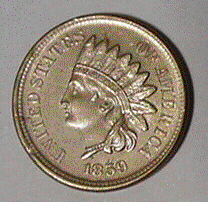 |
Here are some Star Encyclopedia (“Blue Book”) prices for some high grade or uncirculated United States Half Cents and Cents, and their adjusted “Red Book” prices of 1940 (in 1940 dollars):
Half Cents
1940 Star Catalog
1940 “Red Book” Current
PCGS
(Top Price)
(High Grade/ Uncirculated)
(2001 Prices)
1793
$ 5.00
$ 11.00
$ 34,000
1796
75.00
165.00
120,000
1802
2.00
4.40
16,000 in EF
1831, 1836 Proofs
20.00
44.00
3,500
1840-1849 Proofs
20.00
44.00
3,150
1852 Proof
15.00
33.00
2,800
1857
.10
.22
295
Large Cents
1793 (Chain reverse,
“America”)
10.00
22.00
69,500
1793 (Liberty Cap)
15.00
33.00
98,000 in AU
1794
2.00
4.40
5,200
1799
80.00
176.00
5,525 in Fine
1804
25.00
55.00
6,175 in EF
1807
.25
.55
1,450 in AU
1821, 1823
3.00
6.60
575
1857
.25
.55
235
Small Cents
1856 Flying Eagle
10.00
22.00
8,975
1858
.05
.11
245
1859 Indian Head
.50
1.10
215
1869
.50
1.10
390
1877
1.00
2.20
2,200
1909-S Indian Head
.75
1.65
540
1909-S VDB Lincoln
1.00
2.20
760
1914-D
1.00
2.20
1,125
1924-D, 1925-D
.25
.55
50
1931-S
.03
.07
63
Of course, these prices should be corrected for inflation over the last 61 years- but I will leave that up to you. I like these 1940 prices just as they are!
Next time: 1940 prices for some 2, 3, 5, and 10 cent pieces….John Larson.
Club Archivist/ Photographer
Robin Sisler
DUES
The Anchorage Coin Club is a non-profit organization formed to provide information, education, and a meeting place for individuals having an interest in numismatics.
Correspondence Address: Anchorage Coin Club, P.O. Box 230169, Anchorage,
Alaska 99523
Return to: "Top of the Newsletter"